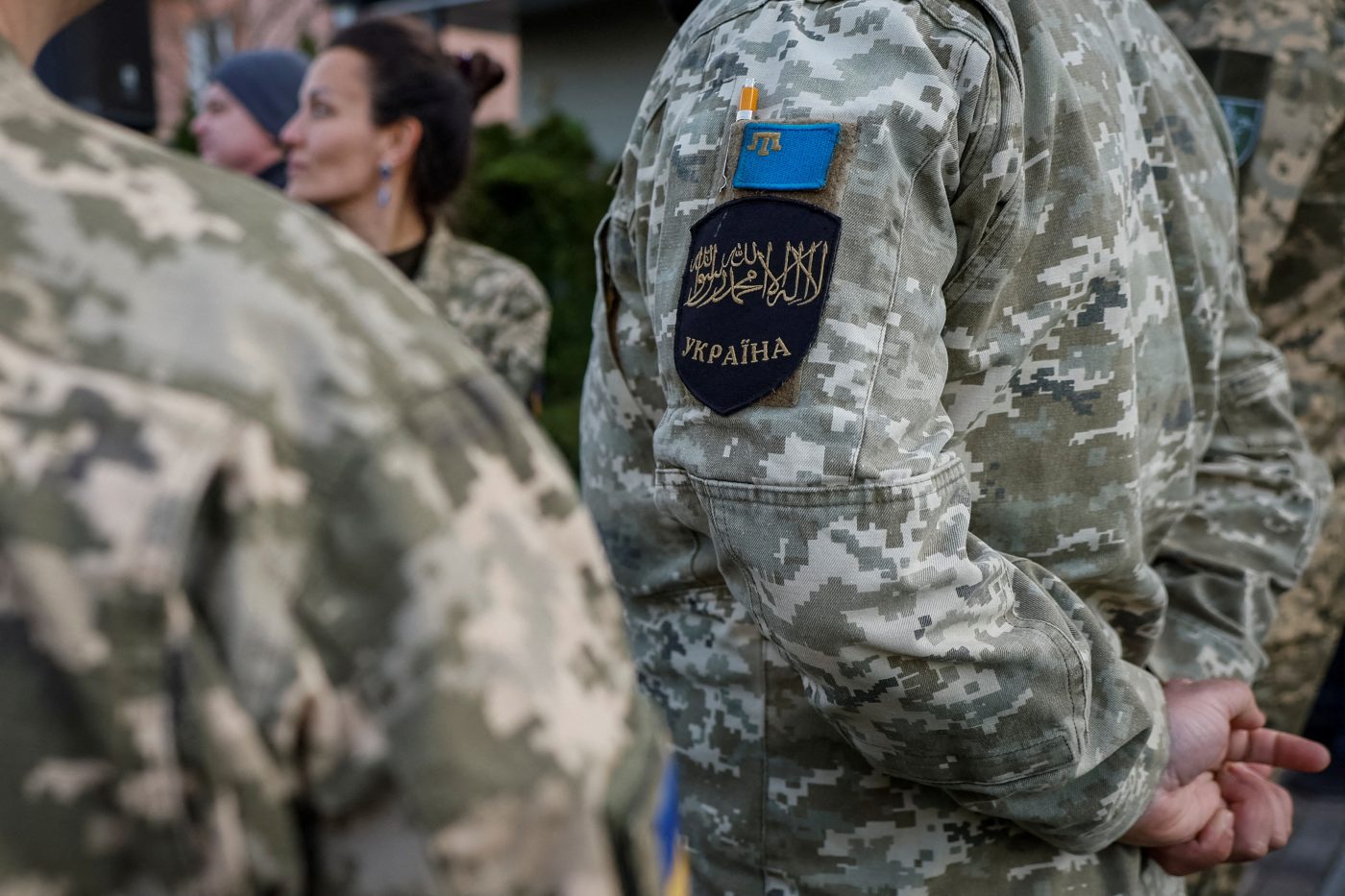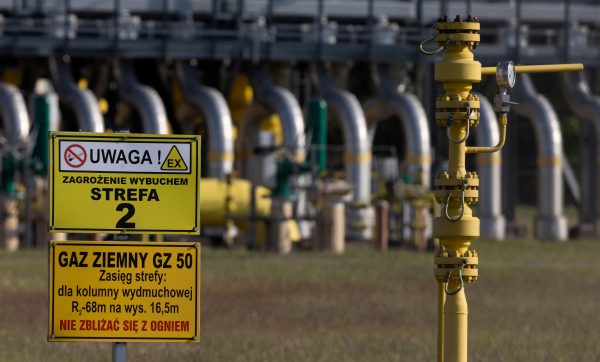Crimea had only just been cleared of Nazi and Axis forces when in the early hours of May 18, 1944, as many as 5,000 members of Stalin’s secret police, the NKVD, supported by 20,000 Interior Ministry troops and countless thousands of additional military personnel, surrounded the homes of the indigenous Tatar population and initiated one of the Soviet Union’s great crimes.
Many died as they were shipped eastward, far from their homeland to Central Asia, in cattle cars and without any sort of humanitarian aid. Accused of collaboration, the Kremlin simply scattered them to remote regions. Of the 180,000 taken at the outset, around 45,000 were dead within months. Many more perished later on, perhaps about 100,000, or half, those who had been deported.
Mere history, standard-issue Stalinist mass murder? It’s much more than that, both because of the devastating effects on the Tatar people, but also because their tragedy continues as Vladimir Putin’s regime has reopened terrible wounds with renewed persecution. Last year, a few hundred Tatars were able to gather in Crimea (Sürgün in Crimean Tatar) to mark the May 18 anniversary but it is unknown whether they will be able to repeat that this year as Russia cracks down on reminders of its past crimes.
Many thousands of Tatars were able to return from their exile to Crimea after the collapse of communism. But that long-cherished hope was swiftly followed by a new dusk as Putin annexed the peninsula and resumed the mistreatment of Tatars.
This has been extensively detailed. In April, the United Nations Committee on the Elimination of Racial Discrimination (UN CERD) stated that Russia was responsible for a series of human rights violations against Tatars and other ethnic groups within Crimea and the occupied territories of Ukraine. These violations included abductions and forced deportations. Moreover, CERD received reports that stated that additional violations included the “destruction of and damage to Crimean Tatar cultural heritage, including tombstones, monuments, and shrines.” During the session, experts called on “Moscow to do more to protect the rights of Tatars” and other minority groups. It also called for the reinstatement of the Mejlis, “a representative body of Crimean Tatars that was disbanded [by Russia] in 2016.”
The UN does not recognize the 2014 Russian annexation of Crimea, and numerous resolutions from various UN bodies have been introduced at the General Assembly calling for Russia’s complete withdrawal from Crimea, not only as an end goal but as a precondition for the restitution of Crimean Tatars.
The Crimean peninsula has been the scene of Tatar persecution and population removal ever since Russia’s first annexation in 1783. In her book Claiming Crimea, Harvard University historian Kelly O’Neill notes that the Crimean peninsula was once a flourishing example of ethnic Tatar society. During the early to mid-19th century, more than 80% of the peninsula’s population comprised ethnic Tatars.
The Russian census in 1835 reported that the mainly Muslim Crimean Tatars comprised 83.5% of the peninsula’s population. In contrast, only 4.4% of the peninsula’s population was ethnic Russians. By 1897, it was reported that only 36% of the peninsula’s population was ethnic Tatar. In comparison, 33% of the peninsula’s population was ethnic Russian, a seven-fold increase from 60 years earlier. By the 1920s, Russians became the largest ethnic group.
The story is critical for Tatars but it also represents a warning well understood by Ukraine, which now marks May 18 as the Day of Commemoration of Victims of the Genocide of the Crimean Tatars. Whoever runs the Kremlin — Imperial Russia, the Soviet Union, or the Russian Federation — the same tactics of cleansing old populations and supplanting them with Russians are employed regardless. Ukraine knows this simply by observing the treatment of its own people in Crimea and Eastern Ukraine.
As Human Rights Watch has said: “Russian and Russian-affiliated officials transported [Ukrainians] to Russia or Russian-occupied areas in organized mass transfers, often against their will or in a context where they had no meaningful choice, which constitutes a war crime.” Those who remain are subjected to cruel and brutal treatment, including summary execution. Ukrainians are, even now, being told to leave Russian-occupied regions in Southern Ukraine although many resist.
They know what comes next. Once the local population is cleared, Russians move in. Large numbers of ethnic Russians have been relocated to Crimea for more than 200 years, resulting in a dramatic shift in the demographics of the peninsula. Today, there are more than 2 million residents in Crimea, most of whom are ethnic Russians.
“Putin is stealing twice,” said Ayla Bakkalli, the Crimean Tatar Representative to the United Nations Permanent Forum on Indigenous Issues. “First, the outright theft of Ukrainian territories that include indigenous people. Second, he is stealing the identity of Ukrainians and indigenous peoples through its Russification of Crimea.”
After Ukraine’s vote for independence in 1991 (supported by a narrow majority in Crimea), thousands of Crimean Tatars began to return to their ethnic homeland, and following the collapse of the Soviet Union. But they were outnumbered and drowned out by the false claim that “Crimea was always Russian.” Russians now comprise nearly 60% of the peninsula’s population, while the Tatars only make up 12%. (Accurate census data has been difficult to obtain following Russia’s illegal 2014 annexation of Crimea.)
Tatars will mark their day of persecution on May 18 wherever they now live; in Crimea, Ukraine, Uzbekistan, the United States, or any of the other places where a displaced people finds refuge. Because it’s important to remember where you came from and who put you there.
“Russia needs to go to therapy,” said Bakkalli. “Russia keeps trying to drag us to the past. Instead, Russia should seek to redefine itself in the 21st century.”
Mark Temnycky is an accredited freelance journalist covering Eastern Europe and a nonresident fellow at the Atlantic Council’s Eurasia Center. He can be found on Twitter @MTemnycky
Europe’s Edge is CEPA’s online journal covering critical topics on the foreign policy docket across Europe and North America. All opinions are those of the author and do not necessarily represent the position or views of the institutions they represent or the Center for European Policy Analysis.





